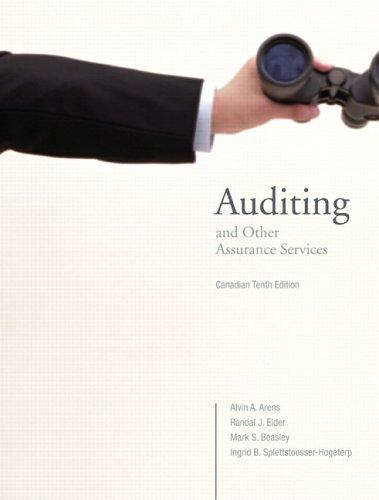Question
A company issues term bonds totaling $300,000 on January 1, 2014. The bonds have a coupon rate of 5%, pay interest semi-annually on January 1st
A company issues term bonds totaling $300,000 on January 1, 2014. The bonds have a coupon rate of 5%, pay interest semi-annually on January 1st and July 1st of each year, and mature in 10 years.
Calculate the bond issue price assuming that the prevailing annual market rate of interest is: 5%, 4%
As applicable, prepare a bond discount or bond premium amortization schedule based on the effective-interest method.
As applicable, record the applicable journal entries in 2014 (1/1/2014, 7/1/14, 12/31/14).
1) 5% Annual market rate of interest (at par) Since the coupon rate equals the prevailing market rate (both 5%), there is no bond discount or premium. And since there is no bond discount or premium, there is no need for an amortization table.
N= I/Y= PV= PMT= FV= The bond issue price equals:
Semi-annual interest is equal to:
Applicable journal entries (first year, 1/1/2014, 7/1/14, 12/31/14):
2) 4% Annual market rate of interest (Bond premium) In this scenario, the coupon rate of 5% is greater than the prevailing market rate of 4%. Therefore, this bond will be issued at premium.
N= I/Y= PV= PMT= FV= The bond issue price equals:
Amortization Schedule:
3) 6% Annual Market rate of interest (bond discount) In this scenario, the coupon rate of 5% is less than the prevailing market rate of 6%. Therefore, this bond will be issued at a discount.
N= I/Y= PV= PMT= FV= The bond issue price equals:
Amortization Schedule:
Step by Step Solution
There are 3 Steps involved in it
Step: 1

Get Instant Access to Expert-Tailored Solutions
See step-by-step solutions with expert insights and AI powered tools for academic success
Step: 2

Step: 3

Ace Your Homework with AI
Get the answers you need in no time with our AI-driven, step-by-step assistance
Get Started


